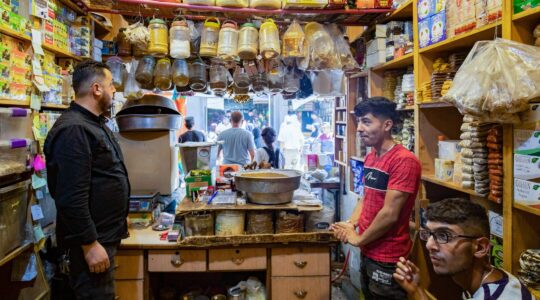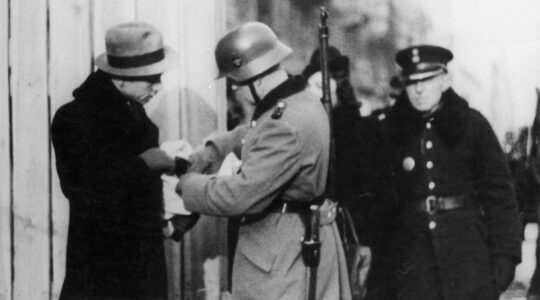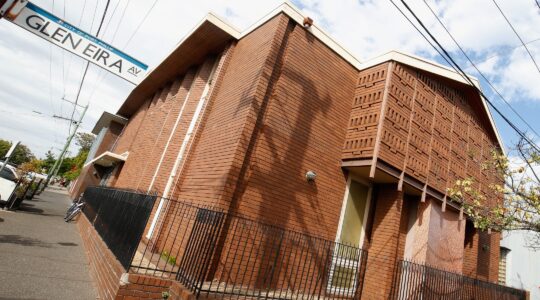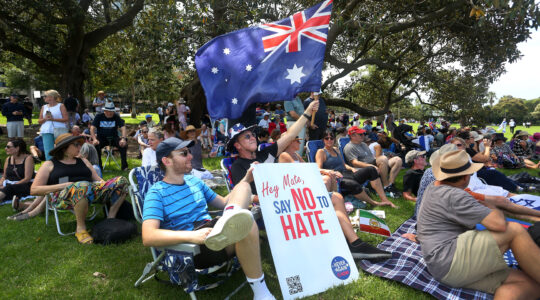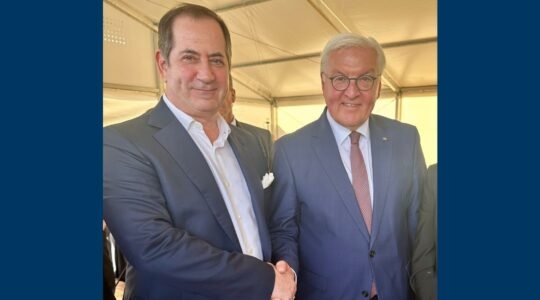COLOGNE, Germany (JTA) — This city in western Germany is banking its future on its Jewish past.
But at present, the investment is exacting a heavy price: $52 million, to be exact.
Following a divisive decades-long battle, Cologne’s municipal government voted recently to allocate that sum toward the construction of a new museum focused on the city’s medieval Jewish quarter. Its centerpiece will be the product of a massive excavation project that began in 2007 in the middle of the city, on the square in front of City Hall.
For years the project had been dogged by opponents who said the country didn’t need another monument dedicated to the Jewish past or complained about the disruption that the project would create in Cologne, Germany’s fourth-largest city.
But with Cologne’s decision to fund the museum, adding to the $18 million already allocated by the state government of North Rhine Westphalia, the city has made a decisive choice: to embrace its Jewish past to attract future tourists.
“A city like Cologne, you always have to think about what you can present to bring new tourists,” said Cologne City Councilman Ralph Sterck, who voted in favor of the project, which passed by a two-thirds majority in the 90-member council. “We are proud of what we have for history, so we want to show the world.”
The museum’s projected revenue was among the factors that prompted City Council members to support the allocation, he said, but there was also the element of embracing Cologne’s Jewish heritage. All over Europe, from Girona, Spain, to Vilnius, Lithuania, cities and countries are making similar decisions in the hopes that becoming a Jewish travel destination will bring in tourism dollars.
In Germany, much of the effort at memorializing Jewish history has focused on the Holocaust era, and Cologne has three other museums concentrating at least partly on World War II-era history. The new project is spotlighting a period when Jewish life thrived in the city — the 1400s.
The museum, which plans to open in 2015, will offer a new way of looking at German Jewish history, said Georg Quander, Cologne’s deputy mayor for cultural affairs. It was Quander who lobbied the City Council to provide the funding for the planned museum.
“History is always an exchange between several cultures,” he said. “I think it’s very important to understand this. Maybe it’s more important than to separate them.”
Sven Schutte, the leader of the Cologne excavation and museum project, concurred.
“If you concentrate just on the Jews in the Nazi times, you put the Jews in a corner that they never have been in,” he told JTA. “To show all this rich history is something which should be done.”
Schutte, who is not Jewish, said he is glad the museum will focus on how Jews have been integrated into Cologne city life for centuries rather than excluded from it.
“If you look at Jewish museums, even Berlin, you see a separate history and you can think that the Jews come from the moon, that they were not an integral part,” he said. “This is a site where you can learn how to live together with other people.”
The massive project to unearth Cologne’s medieval Jewish quarter began four years ago. The city had begun excavating its past decades ago, but until recently the focus was on its Roman quarter. Archeologists working on the Roman quarter actually threw away Jewish material that they had unearthed.
But in the late 1980s the calls began for excavating the Jewish quarter, and in the 1990s some archeological work was done. For a long time, pedestrians could peer down through a glass pyramid on a city square and see the medieval mikvah, or ritual bath, that Cologne’s Jews had used hundreds of years ago.
But the real work on the Jewish quarter did not begin until 2007. Archeologists early on uncovered evidence of a thriving merchants’ quarter where the Jews lived. They unearthed a synagogue that had been in use since the year 780 and the home of a goldsmith; both will be showcased in the new museum.
At its peak in medieval times, the Jewish quarter housed about 1,000 people — the size of a small German city. It was the oldest Jewish community in Europe north of the Alps, and often enjoyed special privileges — such as when the Roman emperor Constantine decreed in the year 321 that Jews could be elected to the city council.
When Jews were targeted during the Crusades, Cologne officials often protected the Jews by hiding them in fortresses and safe houses. In 1349, a pogrom in the midst of the Black Plague killed many of the city’s Jews.
About 20,000 Jews lived in Cologne immediately before the Holocaust. About 40 percent emigrated before they could be deported to concentration camps.
In addition to focusing on Jewish history, the museum also will spotlight the ruins of previous city halls and of Cologne’s Roman years. Artifacts on display will range from Roman bricks and pottery to a 1920s seder plate found among the ashes from World War II.
Tourists already can view the excavation on tours offered every Friday, or by peeking through holes in the fencing surrounding the archeological dig.
Schutte says the new museum will combine forces with the existing Praetorium, a former Roman palace, and provide visitors with a multi-era approach to Cologne’s past.
“It’s the historical greeting card of Cologne because we can show two millennia,” he said.
Schutte plans for the museum to be technologically advanced, with wall displays to unlock special content for visitors with smartphones and large print options available for the elderly.
Since the City Council voted to fund the museum, opposition to the project has faded. One future neighbor, the Wallraf-Richartz art museum, had expressed concerns about a large new structure obstructing its views and the flow of pedestrians across the square, but is now collaborating with the Jewish archeological museum to offer tourists a two-for-one ticket.
Samuel Gruber, who runs a blog dedicated to Jewish art and monuments, and recently attended a colloquium in Cologne about the project there, said the excavation in the city is monumental.
“The extraordinary finds of the excavations make the creation of some sort of museum essential. One can’t just cover this all up again,” said Gruber, of Syracuse, N.Y. “The historic site of Jews for more than a millennium is the natural place.”
JTA has documented Jewish history in real-time for over a century. Keep our journalism strong by joining us in supporting independent, award-winning reporting.
